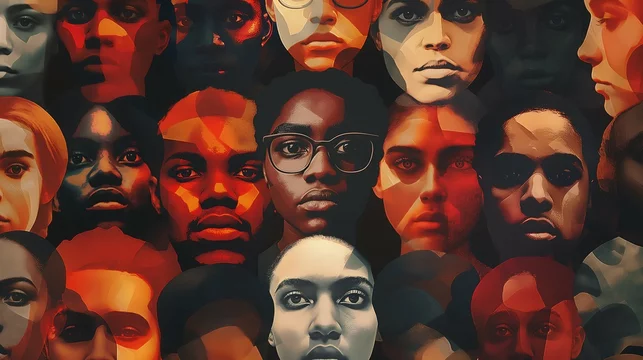By: Sahra Mohamed
As Canada’s population continues to grow and diversify, it important to discuss the country’s evolving social dynamics and how different nationalities and cultures interact with one another. Canada is praised for its multiculturalism but the country still faces significant challenges related to race and discrimination. In many cases, these issues are exacerbated by tensions and misunderstandings. Ignorance and a lack of awareness can create environments where microaggressions are common, not only in predominantly White communities but also within marginalized groups. Microaggressions are subtle verbal or behavioral actions that reflect prejudiced or racist attitudes, based on differences in culture, race, or socioeconomic status. This can create feelings of alienation and marginalization within communities and lead to uncomfortable situations in public spaces such as schools, workplaces, or social events.
Among Indigenous communities in Canada, microaggressions are prevalent, with many individuals facing harmful stereotypes related to their culture and history. As Canada continues its reconciliation efforts with Indigenous peoples, it is crucial to acknowledge how these negative stereotypes can harm Indigenous communities. According to the Canadian Public Opinion Poll on Anti-Indigenous Racism, Indigenous communities face systemic racial discrimination, with many individuals reporting high levels of microaggressions.
Research focused on Indigenous students in Canadian universities has shown that racial and cultural microaggressions greatly impact their academic experiences. This can negatively affect a student’s mental health and academic performance. Indigenous students often face bias from faculty and peers, and their cultural backgrounds may not be understood or respected. A report from the Ontario Human Rights Commission (OHRC) indicates that Black and Indigenous students are more likely to face disproportionate disciplinary actions and be stereotyped in schools, leading to increased exposure to microaggressions
In an effort to combat stereotypes, supporting Indigenous art and filmmakers can make a difference. The narratives created by Indigenous writers and filmmakers are more authentic when told by members of the community. By supporting and celebrating Indigenous voices in the arts, we can promote greater understanding and respect for their culture. Here are 12 films Canadians can support.
Another concerning aspect of microaggressions is their frequent occurrence in the workplace. A 2022 survey by KPMG involving 1,000 Black Canadian professionals revealed that an overwhelming 81% had experienced some form of racism in the workplace. A 2023 article from the Government of Canada’s Department of National Defence highlighted how power imbalances within workplaces can lead to microaggressions. Employees in higher positions may engage in behaviors that demean or belittle colleagues from marginalized groups. A 2021 study conducted on Black Canadians aged 15-40 found that experiencing microaggressions was linked to lower self-esteem and negative impact on mental health. This study emphasized the psychological toll of these experiences on younger Black Canadians who are navigating both educational and professional spaces.
An important aspect of microaggressions is the discrimination faced by LGBTQ+ Canadians, especially people of color. A report from Statistics Canada notes that LGBTQ+ people of color often face discrimination from others within the LGBTQ+ community based on their race. This discrimination marginalizes their experiences. According to the Canadian Mental Health Association (CMHA), microaggressions can lead to negative mental health outcomes for individuals struggling with sexual orientation and racial identity.
Studies have found that individuals from one marginalized group may harbor prejudices or engage in discriminatory behaviors toward another marginalized group. This intra-community bias can come from stereotypes or historical tensions. Addressing these issues requires honest introspection and open dialogue within communities. Implementing comprehensive education and training programs can help individuals recognize their biases and understand the impact of microaggressions. Organizations, schools, and institutions should create and enforce clear policies to address and prevent microaggressions, ensuring accountability and promoting respectful treatment for all.
Comedian and social commentator Hasan Minhaj has shed light on the complexities of systemic racism in America. He emphasizes not only the brutality and oppression faced by Black Americans but also how some marginalized groups, including some Asian American communities, have been complicit in maintaining these systems of oppression. Hasan Minhaj points out that aspects of the “model minority” myth have led some Asian Americans to align with dominant groups, resulting in a lack of concern toward confronting racism or actively supporting discriminatory practices.
This pattern of complicity among marginalized groups is also evident in Canada. Some Asian Canadians may harbor prejudices against Black Canadians, and some immigrant communities might perpetuate harmful stereotypes about Indigenous people. Just as Minhaj urges minority groups to confront their roles in perpetuating systemic injustice, Canada’s marginalized communities must engage in self-reflection. Black and Indigenous Canadians, along with Asian and other minority groups, are all affected by systemic racism. By acknowledging their shared struggles, these communities can challenge oppression and work towards a more inclusive society.



Leave a Reply